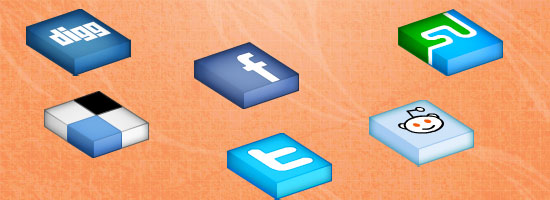Social media distinguishes itself from less versatile interactive mediums of the past like print and traditional advertising by giving life to the Intelligent User.
This modern distinction is often misunderstood by web developers and under-appreciated by users because the power of choice is a novel distinction.
It didn’t exist in previous mediums. In marketing, for example, consumers are used to the old paradigm where they listen passively and marketers tell them what to think. The interaction only moves in one direction.
On the Internet, interaction is more involved and the Intelligent User — as the consequence of this new system — has overtaken the old paradigm.
Social Media, Briefly Defined
First of all, what is social media? Briefly — for the benefit of those of you living under a rock for the past half-dozen years — it is the integration of technology and social interaction. When you see social media, think blogs, Facebook, and Twitter.
How does social media work? I’ve always heard that the best advertising is word of mouth. The best explanation for social media is that it’s word of mouth on steroids, and people are sharing more than words. They also share ideas, pictures, video, and audio: Content. Then other users share that content — in turn, through personal connections — at an unprecedented rate.
Some content spreads like wildfire, and some makes the tiniest of ripples, but each choice is made by an Intelligent User.
The Misconception
With millions of people contributing to social media, there is a lot of noise. Which is why an explanation similar to the following — to explain how content spreads — is promptly furnished by anyone who doesn’t fully understand the mechanism:
"The credibility allocated instantly and unquestioningly to just about anything that is read online is a new phenomenon."
– Anne Kavanagh, Global Travel Retail
Returning to the ‘word of mouth’ comparison, the "phenomenon" is that word spreads faster than ever on the Internet through the web of connections built by social media.
The misconception is that in Kavanagh’s explanation of social media, there is no direction to the "phenomenon."
Word does not spread through social media "unquestioningly." It does not spread without thought or purpose. She offers decent advice, but her understanding is flawed.
Marketing campaigns based on this flawed understanding will never tap the full potential if the audience is treated like a mysterious phenomenon instead of a group of Intelligent Users.
Old Techniques, New Delivery
We can clear up Kavanagh’s misconception by explaining how social media actually works.
The "phenomenon" is not new. It’s not even a phenomenon. Social media works similarly to how word of mouth worked before the Internet, as I’ve explained, only now it’s amplified and recorded by technology.
Kavanagh was right about one thing. Word seems to spread "instantly" online. The infrastructure of social media is built for millions of immediate minute interactions.
You can literally watch it happen on a website like Twitter. Not only can interested parties follow the conversation, they can measure, assess and even, as Kavanagh suggests, influence its direction.
The Implications
To recap, Social Media is not digital paper. It is not just a bunch of noise. It is a multi-functional two-way communication system made up of millions of Intelligent Users.
So what does this mean for you?
To the Intelligent Users
You’re not just a statistic. Here are some things you can do to humanize your experience.
-
It’s an investment. The more you put into social media sites, the more you get back. Your experience is based on your willingness to experience. So put something in. Who knows what you’ll get in return?
-
Interact – Don’t be afraid of change. Go with your first instincts when using new products. Try it for yourself before you pass judgment.
-
Give feedback whenever developers ask! In fact, give it when no one asks. Positive feedback is always welcome, but don’t be afraid to give constructive criticism, too. It could make the product, perhaps even the whole industry, better.
To Developers
You are the innovators (or, as Nietzsche named his new philosophers, the attempters). But don’t forget that you’re making a product for the users.
-
Listen to your users. Your users don’t know as much as you do, but their feedback is important, especially the negative feedback. Be patient. Remember that you’re there to help them, not scare them off with your intimidating technological prowess.
-
Try new things. New ideas brought us here, and new ideas will lead us to the future. Although you must be attentive to your users, don’t be afraid when they protest new ideas. People are naturally averse to change. Facebook users protested the changes many times, but Facebook kept moving forward, and overall their changes have been an improvement on the experience.*
-
Don’t be afraid of failure, and most importantly, learn to recognize it. Remember, it doesn’t matter how many times you get knocked down, what counts is how many times you get back up.

















0 Comments Posted By The Peanut Gallery:
Post a Comment